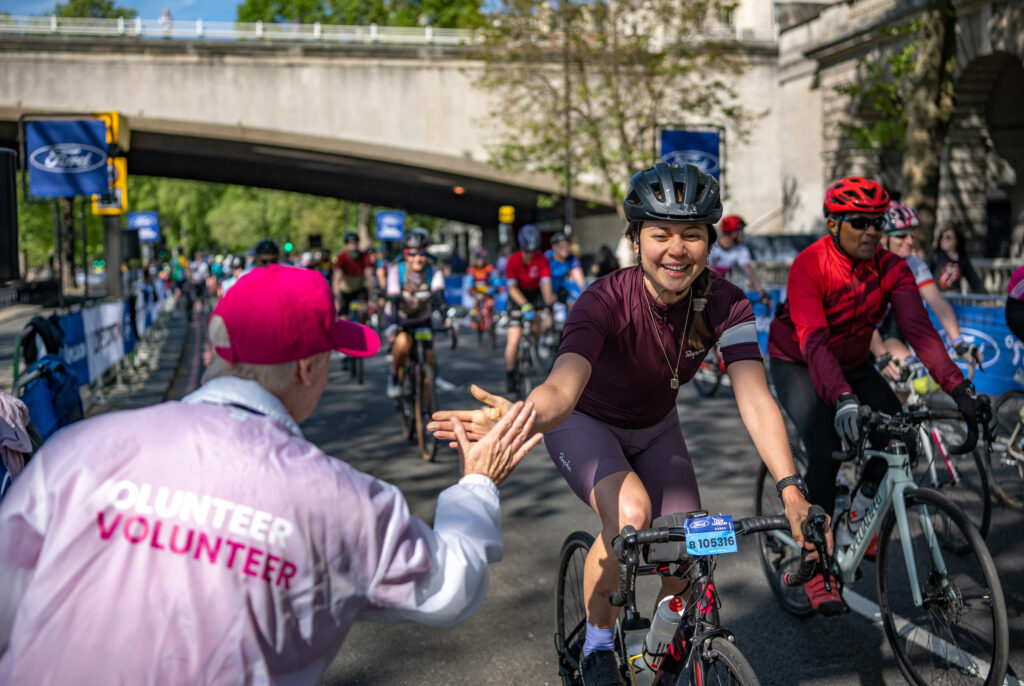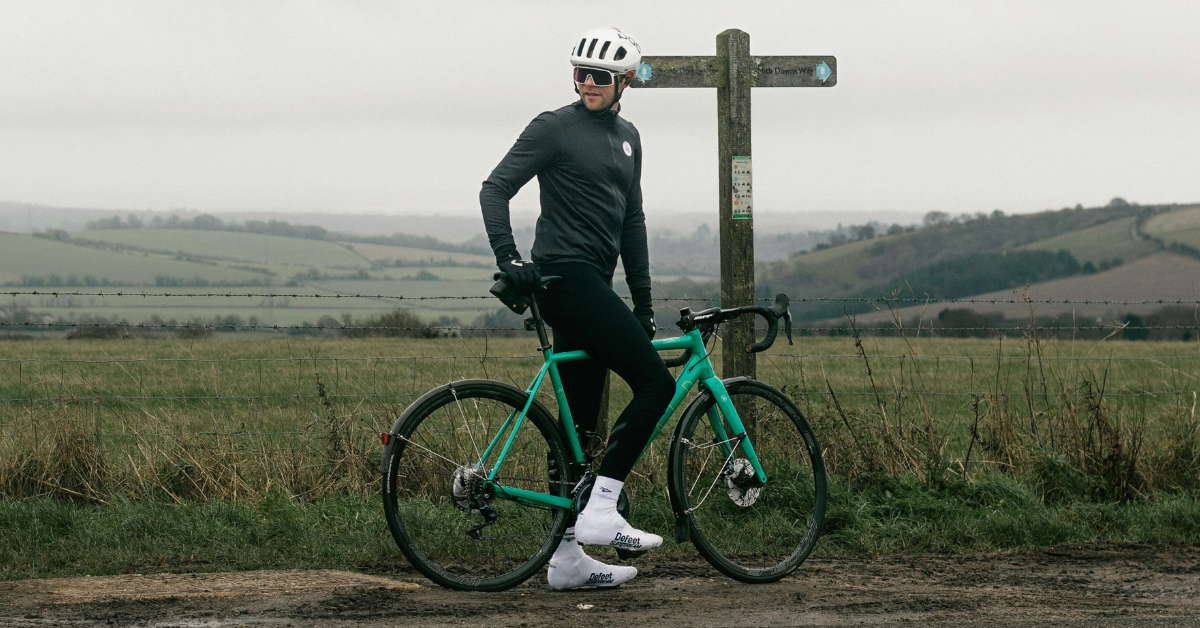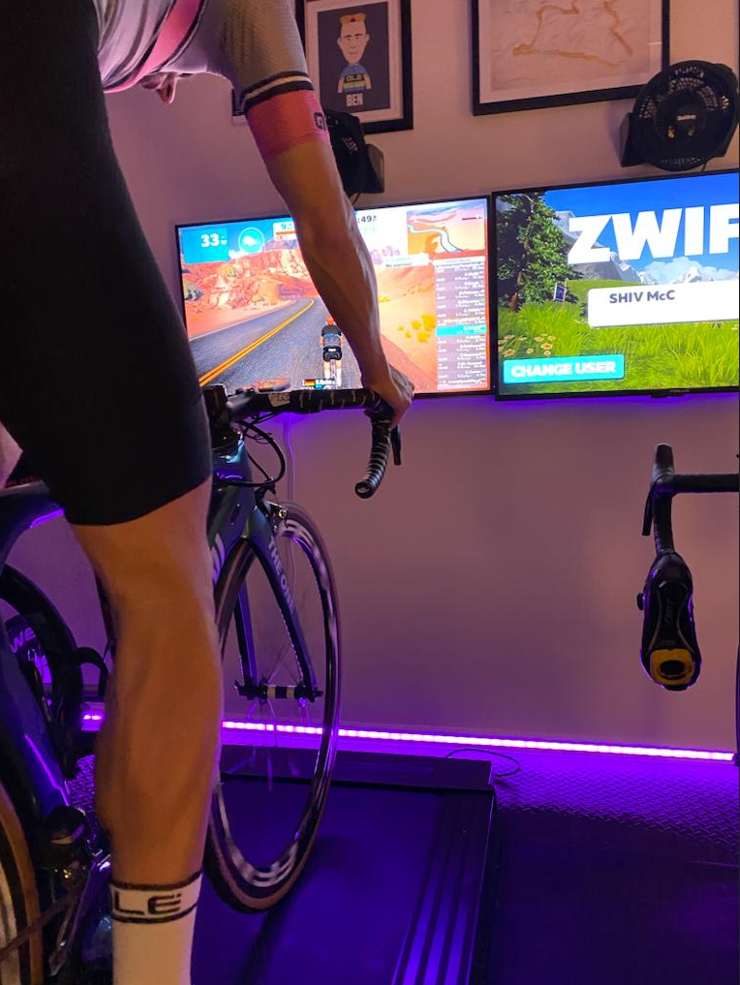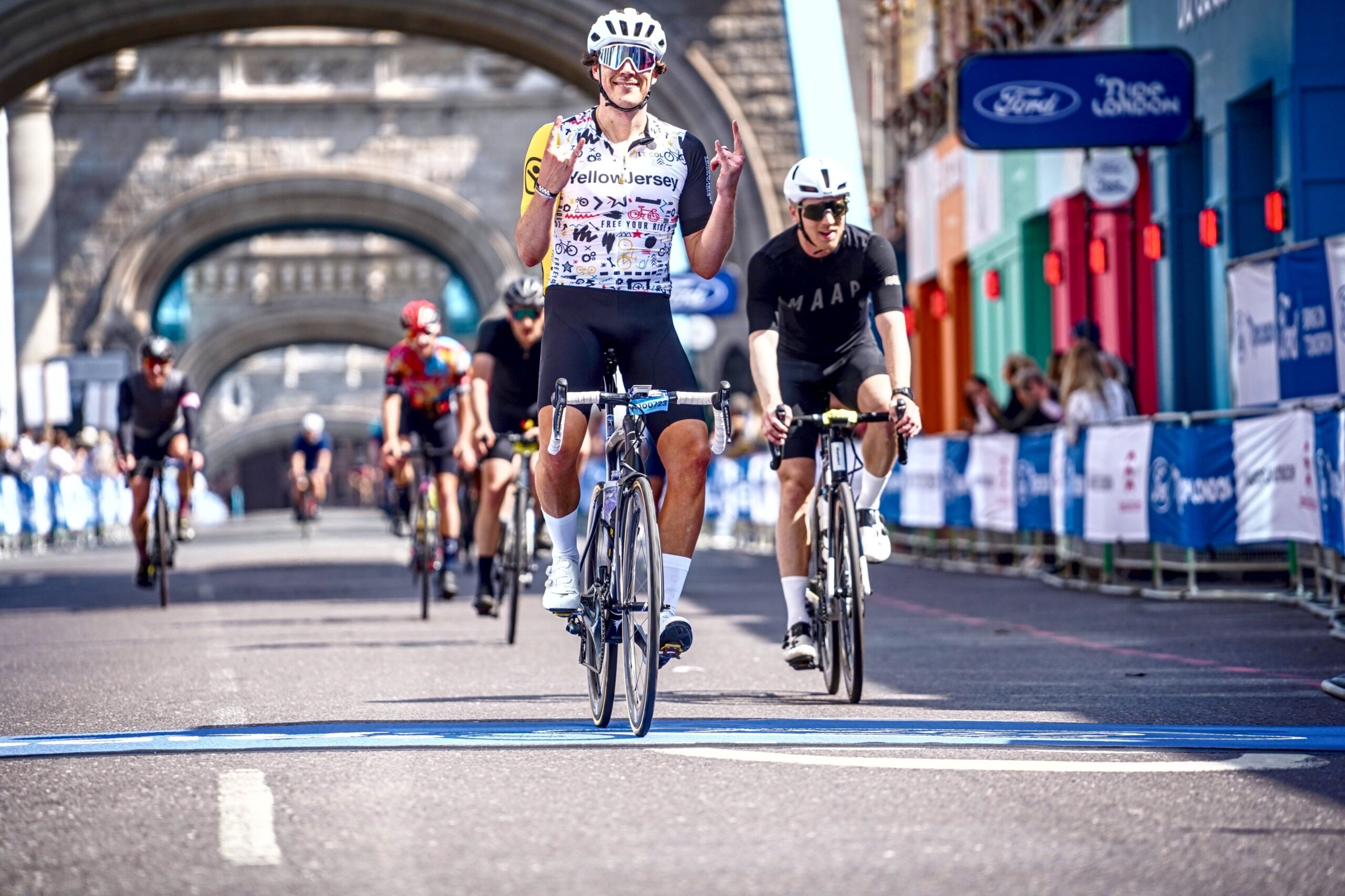Our guide to finishing your first 60-mile sportive
So you’ve decided that 2024 is going to be the year you find your motivation and complete your first ever cycling event, but you aren’t sure how to get started. That’s totally understandable, between the frowny-faced and serious looking club rides you occasionally spot, and the seemingly endless obsession the sport has with getting faster and lighter, getting into cycling can seem a bit daunting. It can be much more appealing to stay within your comfort zone, rather than push yourself to set a goal that – on the face of it – is a little bit scary.
This guide is designed to help you find the training methods that work best for you and to guide you towards finishing your first ever event. It’s a jumping off point for you to make your own personalised training plan and nail that first 60 mile sportive. Why 60 miles? We genuinely believe that this is a distance anyone can manage with a little bit of focused training. It’s also far enough to serve as a real test of your mettle! In terms of picturing the distance, it’s about the same as riding from London to Brighton, Glasgow to Edinburgh, or Manchester to Sheffield and back again.

Getting Started
Getting started is always the hardest part. Once you’ve gotten going and have a plan to follow, everything will seem less daunting.
The first step is to decide what your final goal is. If you are training for a specific event, are you looking to just have fun and complete the ride? Or are you looking to beat a certain time, or be the first over the finish line? Your end goal will determine what your training plan looks like.
The other key thing to know before you make your plan is how long you have before your event. If you’re getting started early, great! You can start easy and slowly amp up the intensity as you go. If your riding buddy just sprung a 60 mile sportive on you for two weekends from now, then you’ll have to move a little faster. That means you’ll have to make more space in your schedule for riding.
Which brings us to the next question you’ll have to ask yourself as you set up your plan: how much time per week are you going to spend on your bike? Don’t worry, you don’t have to be riding six hours a day, five days a week. Instead, you’ll likely want to set aside at least six hours a week for training.
Making Your Training Plan
We’ve spoken a lot about the concept of a training plan, but not a lot about what it is or how to make one.
What is a training plan? It’s exactly what it sounds like, a plan to keep you on track throughout your training. That’s not to say that you have to be married to your plan the whole way through, if you find that you’ve underestimated or overestimated yourself at the beginning, you can absolutely make changes along the way.

How do you make a training plan?
We’ve already covered most of how to get started: figure out how much time you have, what your end goals are and how much time per week you want to devote to your training. We all lead busy lives, which is why it’s recommended to make your training plan yourself. Only you know how best to fit your training around your schedule.
Here are a few types of rides to consider when making your training plan:
One to three short mid-intensity rides – Depending on your experience and fitness level going into your training, these rides should be anywhere from nine to 18 miles to begin with and should be ridden at just slightly above your normal pace. As you train, these rides will get longer to match your ability. These are designed to be fit in before or after your work day and can be integrated into your commute if you have one.
At least one longer low-intensity ride – This ride should be about 30 to 50 miles to begin with and should be ridden at your regular pace. This ride is designed to be done on a weekend or another day when you don’t have significant demands on your time.
One short high-intensity ride – This ride should be either the same length as your short mid-intensity rides or shorter. It’s designed to push you and your abilities, so fit this one in on a day where you can take it easy for the rest of your day.
A cool-down ride – At least one of your rides should be easy and relaxing, not all of this training needs to be gruelling. You’ll probably want to fit this one in about mid-week, so you get a break in between the rest of your rides.

Tips and Tricks
You don’t have to fit all of these rides in. Depending on what kind of event you’re training for, your priorities will change. For example, if your end goal is a 60 mile sportive, you’ll want to focus more on longer mid-intensity to build up your endurance. On the other hand, if your end goal were something like a sprint triathlon, you’d want to focus more on the shorter high-intensity rides to push your top speed and increase your stamina (while also making time in your schedule to train for your run and swim!).
Always start with something easier than what you think you can manage and build up. Does a nine mile ride sound daunting? Then start with a ride around your neighbourhood and build up from there. The last thing you want is to get 15 miles from your front door and realise you can’t make it home.
Increase your distances as you go. A good hack is to set yourself an amount of time before work, say an hour out and an hour back, and see how far you can get. As your fitness increases, so will your distance.
Do at least one “dress rehearsal” of your event before the actual event. Try and do this a month out, if possible. This is to make sure that you’re ready for the event itself and to test if you need to up your training for the last stretch.
Take a few days off before the event itself. Make sure you’re eating well and getting plenty of rest, not only throughout your training but especially in those last few days.
Finally, remember to enjoy yourself. Setting goals on the bike is about stretching yourself, not torturing yourself or spinning into an anxiety hole.

Training outside on the roads? Yellow Jersey offer bicycle insurance which is designed to cover crash damage, accident damage and theft when training and of course, taking part in sportives! If you need a bit of help, just give us a call on 0333 003 0046 or message us on our live chat!
Title image courtesy of Jon Super for London Marathon Events